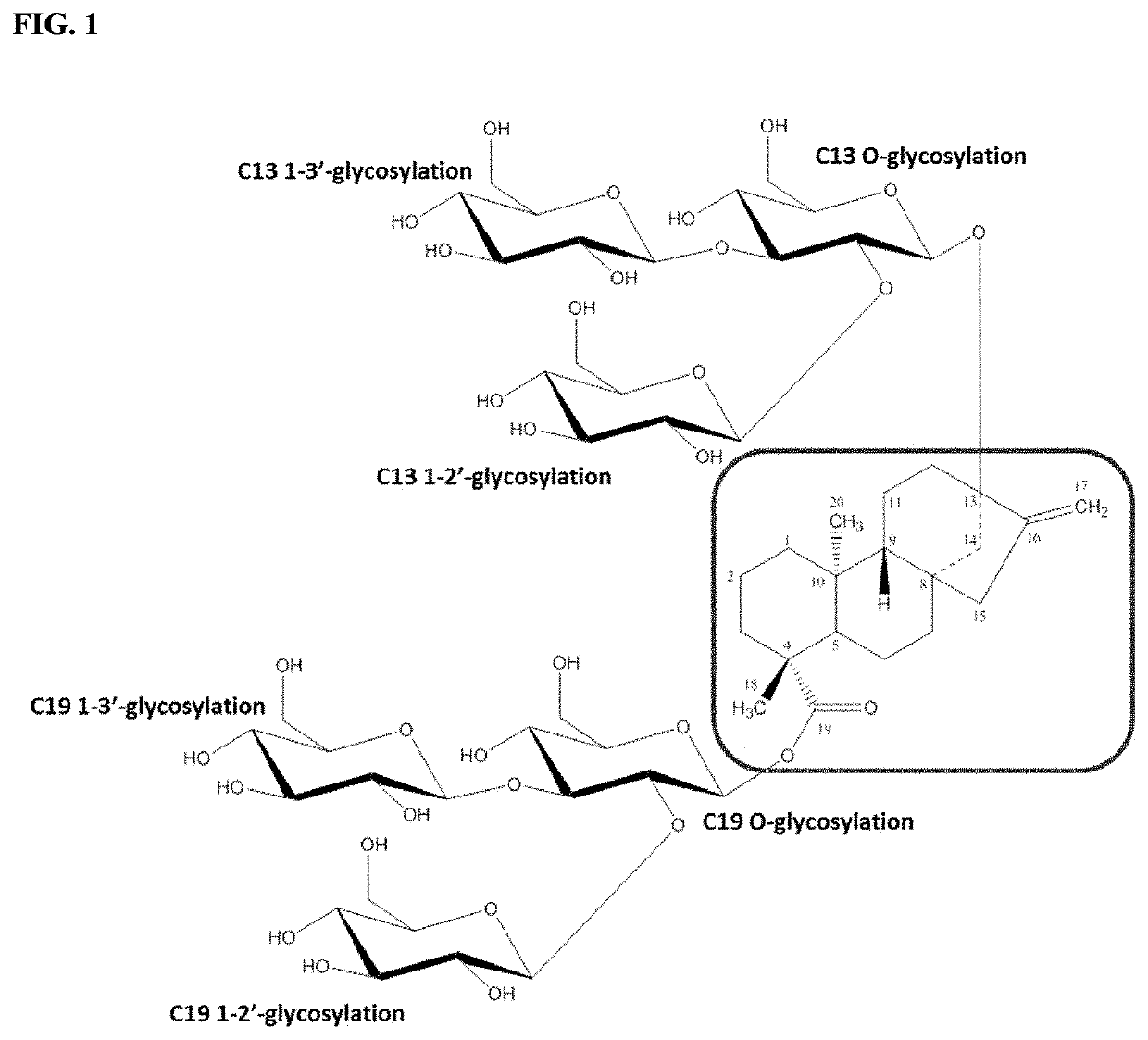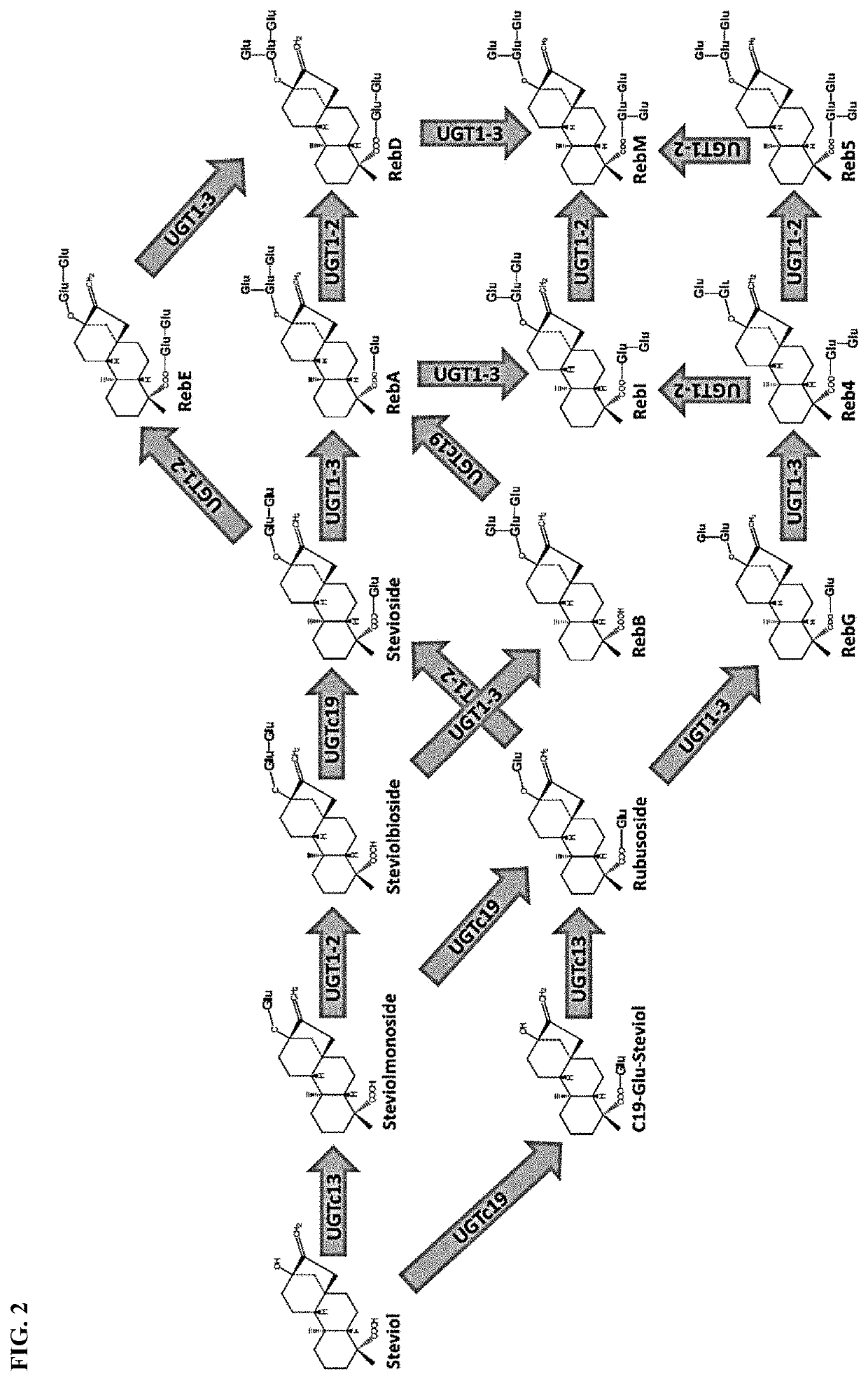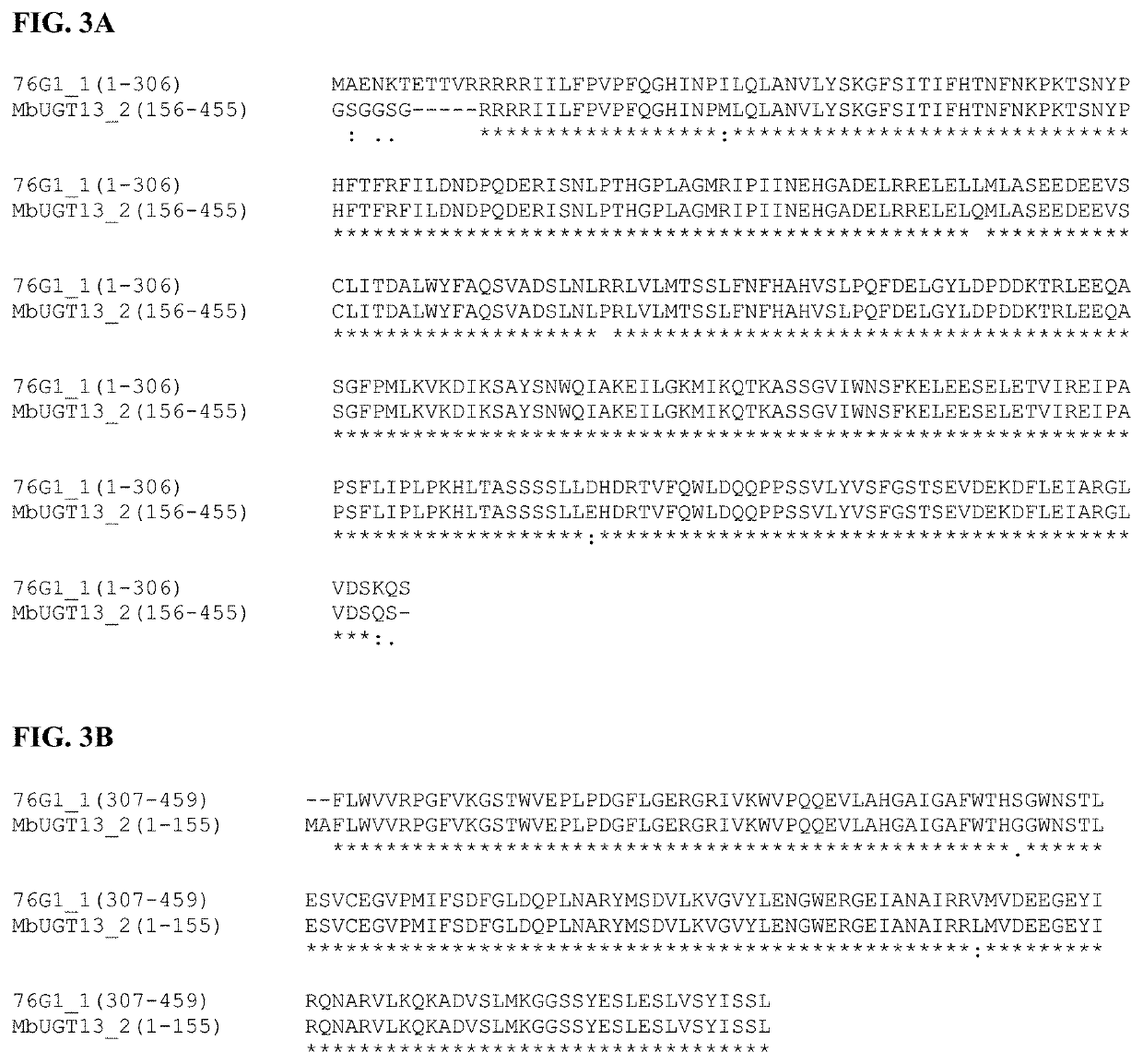Uridine diphosphate-dependent glycosyltransferase enzyme
a glycosylation and uridine diphosphate technology, applied in the field of enzymology, encoding polynucleotides, host cells, can solve the problems of inability to provide minor glycosylation products and inability to sustain the process of preparing steviol glycosides from the stevia plant, and achieve the effect of improving the activity of the enzym
- Summary
- Abstract
- Description
- Claims
- Application Information
AI Technical Summary
Benefits of technology
Problems solved by technology
Method used
Image
Examples
example 1
of Mutants for MbUGT1-3_1 (SEQ ID NO: 5)
[0108]Plasmids comprising polynucleotides encoding UGT MbUGT1-3_1 (SEQ ID NO: 5) and 95 selected mutants were transformed into E. coli cells (ΔushA, ΔgalETKM, Δpgi; overexpressed pgm, galU). The resulting strains were seeded into a rich seed media and incubated overnight in 96-well plates at 250 rpm at 37° C. to make the seed cultures.
[0109]Production cultures were seeded with the seed cultures by adding 40 μL of the seed to 360 μL of fresh production media containing 0.5 mM Stevioside and 0.5 mM Rebaudioside D. The production culture was subsequently grown for 48 hours in 96-well plates at 250 rpm at 37° C. Products were quantified using a LC-MS QQQ.
[0110]The 95 mutants screened include the following (amino acid position of these mutants is with respect to MbUGT1-3_1 (SEQ ID NO: 5):
[0111]i) Substitution:[0112]F11L, K13R, T16E, V18L, E19A, G48T, S62A, D73P, L89W, V93L, Y94E, W99F, E100C, N106R, E115K, Y119T, Q122E, K130W, V133A, V133S, M136K, ...
example 2
sion by 1-3′ Glycosylating Enzymes
[0121]Plasmids comprising polynucleotides encoding three UGTs, SrUGT76G1-L200A (SEQ ID NO: 1), MbUGT1-3_0 (SEQ ID NO: 4), MbUGT1-3_1 (SEQ ID NO: 5), and MbUGT1-3_2 (SEQ ID NO: 6) were individually transformed into E. coli cells (ΔushA, ΔgalETKM, Δpgi; overexpressed pgm, galU). The resulting strains were seeded into culture media containing 1 mM stevioside or 1 mM RebD. After growth, steviol glycosides were recovered from the culture media. Strains were grown overnight in 96-well plates at 250 rpm at 37° C. The cells were then transferred to a fresh production culture to 10% of the total volume. Each of stevioside (0.5 mM) and Rebaudioside D (0.5 mM) were included in the production culture. The production culture was then grown for 48 hours in 96-well plates at 250 rpm at 37° C. Products were quantified using a LC-MS QQQ.
[0122]FIG. 4 shows the percent conversion of stevioside to RebA and the percent conversion of RebD to RebM. The percent conversion ...
example 3
of Mutants for MbUGT1-3_2 (SEQ ID NO: 6)
[0123]Plasmids comprising polynucleotides encoding UGT MbUGT1-3_2 (SEQ ID NO: 6) and 96 selected mutants of MbUGT1-3_2 were transformed into E. coli cells (ΔushA, ΔgalETKM, Δpgi; ΔaraA, overexpressed pgm, galU, UGT1-2 enzyme). The resulting strains were seeded into a rich seed media and incubated overnight in 96-well plates at 250 rpm at 37° C. to make the seed cultures.
[0124]Production cultures were then seeded with the seed cultures by adding 40 μL of the seed to 360 μL of fresh production media containing 1 g / L stevioside / RebA leaf extract. The production culture was then grown for 48 hours in 96-well plates at 250 rpm at 37° C. Products were quantified using a UPLC-DAD.
[0125]The mutants screened include the following (amino acid position is with respect to MbUGT1-3_1 (SEQ ID NO: 5):
[0126]i) Substitution:[0127]T16G, V18L, E19A, D23E, R31K, C64S, 170V, L76N, P79M, W99F, D114E, R125L, V133A, S150D, T202M, F204E, Y212F, Y212H, R218L, D227S, E2...
PUM
| Property | Measurement | Unit |
|---|---|---|
| optimal temperatures | aaaaa | aaaaa |
| temperatures | aaaaa | aaaaa |
| temperatures | aaaaa | aaaaa |
Abstract
Description
Claims
Application Information
 Login to View More
Login to View More - R&D
- Intellectual Property
- Life Sciences
- Materials
- Tech Scout
- Unparalleled Data Quality
- Higher Quality Content
- 60% Fewer Hallucinations
Browse by: Latest US Patents, China's latest patents, Technical Efficacy Thesaurus, Application Domain, Technology Topic, Popular Technical Reports.
© 2025 PatSnap. All rights reserved.Legal|Privacy policy|Modern Slavery Act Transparency Statement|Sitemap|About US| Contact US: help@patsnap.com



